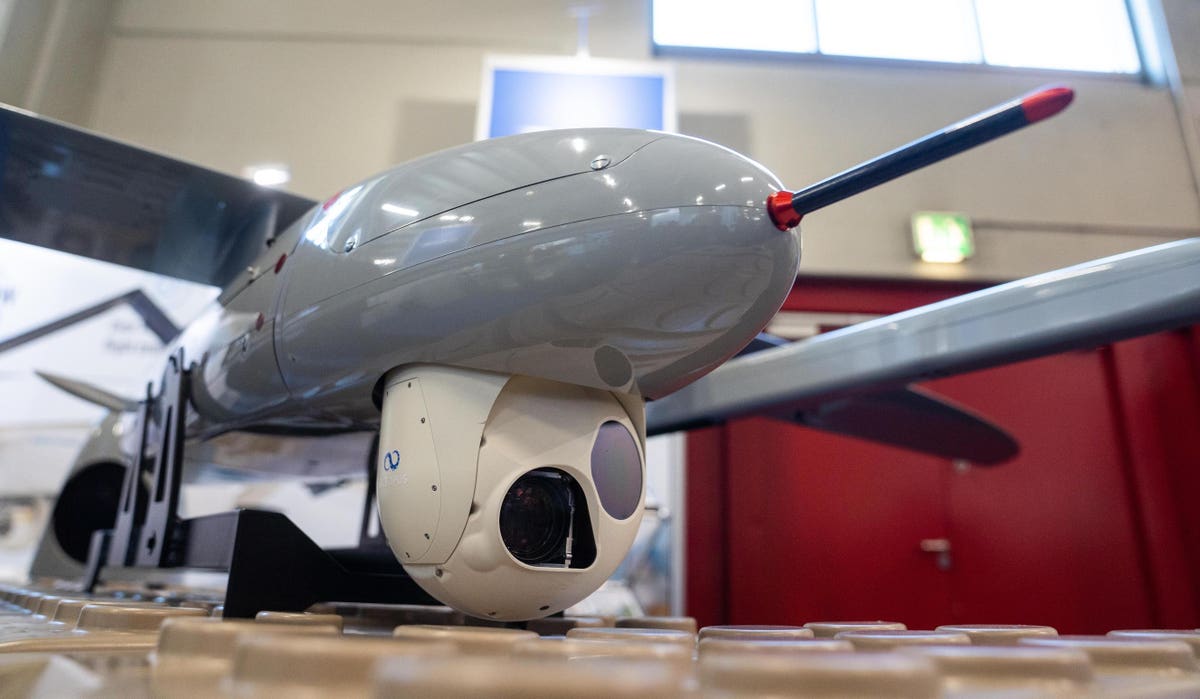The United States’ aid packages to Ukraine have provided various Unmanned Aerial Systems (UAS) to support their efforts in the war with Russia. These UAS offerings include a range of systems, from the Switchblade loitering munition to the Scan Eagle UAS. Interestingly, the latest addition to this aid is the Penguin UAS, a commercial drone commonly used for military applications. The commercial nature of this UAS, coupled with its modularity, has the potential to provide Ukraine a competitive edge in the Russia-Ukraine war.
The Penguin UAS, initially developed by UAV Factory in Latvia and now produced by Edge Autonomy in California, has gained acclaim as the “closest thing one can get to a military-grade UAV as a civilian consumer.” Resembling the Bayraktar TB-2 but with a smaller wingspan ranging from 3.2 to 3.5 meters, the Penguin UAS is available in multiple versions. The U.S. aid to Ukraine likely consists of Penguin B and Penguin C models that were ordered from Edge Autonomy in 2022. Both models have a high degree of versatility, allowing for a range of payloads; however, the Penguin C offers improved aerodynamics, extended range, and impressive 20-hour flight times. Further, while most Penguin UAS require a catapult launch, some Penguin C models feature Vertical Take-Off and Landing (VTOL) capabilities. Commercially, these drones are known for their user-friendly nature, being quick to unpack and launch with a two-person team in under an hour.
One of the standout features of these systems, especially the Penguin B design, is their modularity, facilitating easy integration and customization of various payloads. The drones have a payload capacity of approximately 4 kg, which is more than sufficient for accommodating high-resolution imaging sensors, multispectral cameras, LiDAR systems, and other sensors for data acquisition and analysis. The Penguin UAS possesses autonomous flight capabilities, capable of executing predefined missions and flight paths using advanced autopilot systems and mission planning software. Due to this adaptability, the Penguin UAS has been used across a range of industries including agriculture, infrastructure inspection, scientific research, in addition to military reconnaissance.
The Ukrainians have previously deployed the Penguin UAS in their war with Ukraine. Indeed, Ukraine has deployed a wide array of different military and commercial drones throughout the war, and the Penguin UAS was developed by an allied Eastern-European country. Although it is unknown as to the exact number of devices operated by Ukraine, Oryx reports that at least two have been captured by the Russians.
The selection of the Penguin UAS in the recent aid package aligns well with the current stage of the conflict in Ukraine. Drones are slated to play a key role in the Ukrainian counter-offensive. As the situation evolves, the Ukrainian forces will need to adapt to navigate minefields, push Russian defensive lines, and counter Russian artillery. The modular payloads of the Penguin UAS empower the Ukrainians to quickly customize the drones to suit their evolving needs. Additionally, the Ukrainian military can leverage the country’s pool of soldiers with technical backgrounds who possess the necessary skills to develop new payloads. This capability allows the Ukrainian forces to gain new advantages and enhance their capabilities in the battlefield.
Crucially, to be effective on the battlefield, Ukrainian drones must withstand the formidable Russian counter-drone systems, including electronic warfare and kinetic systems. Recent reports show that the Ukrainians are losing 10,000 drones per month, although most of these are cheaper hobbyist quadcopters. The modular software architecture of the Penguin UAS could enable it to operate at a higher degree of autonomy. This would allow it to survive the electronic warfare tactics employed by the Russians which target the command signals sent to the drone. Its operational flexibility in terms of altitude and flight speeds would also aid in evading detection by radar systems. Furthermore, the configurable nature of the drone’s payload offers the potential for the addition of electronic components that can neutralize Russian counter-drone systems.
The cost factor of these systems also plays a key role in the potential success of these aircraft. Originally designed for commercial purposes, the Penguin UAS has undergone cost reduction measures, resulting in a significantly lower price range. Estimates from various sources place the Penguin B UAS base cost under $20,000, which increases based on the payload; this cost is significantly less than its military equivalent. This affordability allows the drones to be deployed as expendable assets, providing greater flexibility and adaptability in various operational scenarios. On the other hand, Russian counter-drone systems tend to be expensive. In the event they attempt to shoot down a Penguin UAS, they inadvertently risk exposing their position, making them susceptible to being targeted by Ukrainian artillery.
The employment of the Penguin UAS by Ukrainian forces showcases an important trend in drone warfare. While fully militarized drones will always play a crucial role on the battlefield, modular, cheaper, commercial drones provide militaries with a cost-effective solution to counter a number of enemy threats. They allow a country to leverage their technical talent and adapt to a changing, dynamic battlefield.
Read the full article here





